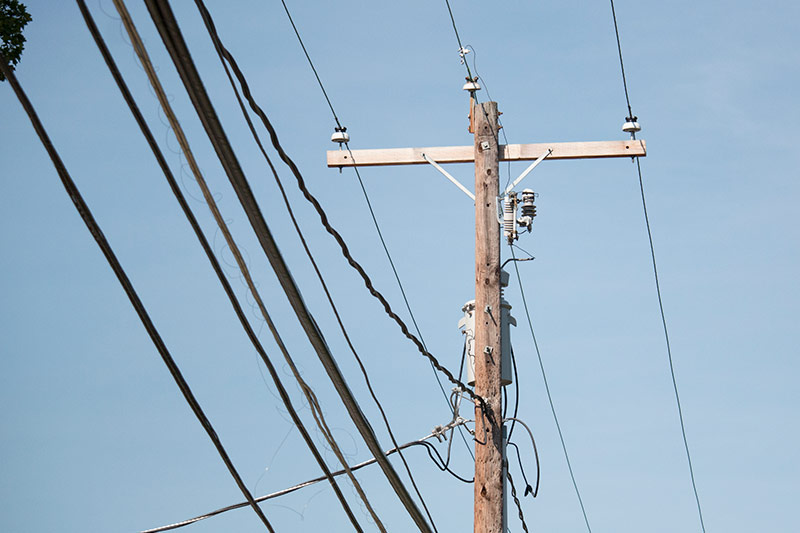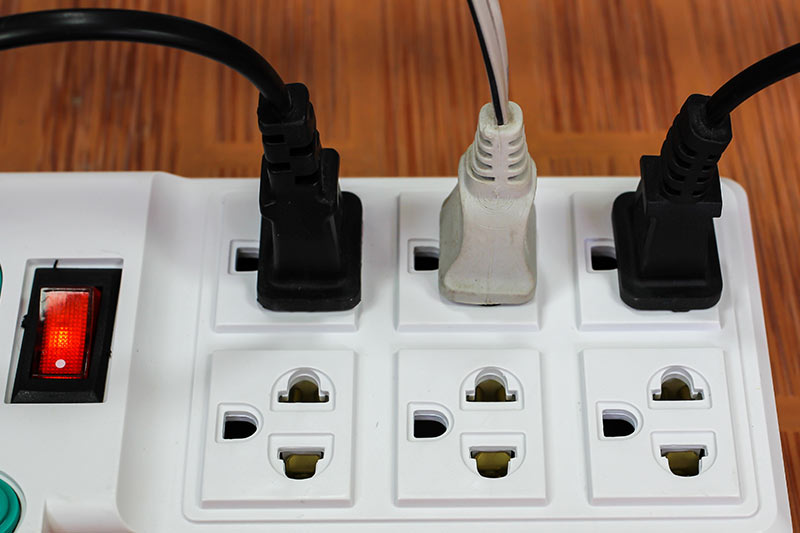Around the Home
PPL Electric UtilitiesOverhead Power Lines

- Don’t make contact with power lines and work at a safe distance from them.
- Avoid contacting power lines with ladders, tools or equipment. Keep equipment at least 10 feet from power lines.
- Look up for power lines when using ladders, scaffolding, framing a building, painting, pruning trees, picking fruit or working atop buildings.
- Make sure to have adequate clearance while moving objects under power lines to avoid contact.
- When moving ladders, carry them parallel to the ground to avoid contacting any overhead power lines in the area.
Underground Power Lines
PPL maintains underground power lines in some parts of its service territory. Making contact with those underground lines could cause injury or death.
- Call 811 – the call is free for residential customers – before digging with power equipment.
- An 811 call is required by law when digging with power equipment.
- Call 811 at least three business days before digging with a shovel or power equipment.
- Know this information when calling 811:
- The street name and address of the dig.
- The nearest intersection.
- The name of the company doing the work (if applicable).
- For more information on safe digging, visit www.pa811.org or www.pa1call.com.
Pad-mounted Transformers
- As you’re shoveling and plowing snow, remember to be extra careful around pad-mounted transformers. Please keep them clear, don’t bury them with snow and be careful not to contact them with shovels, snow blowers or other equipment.
- While doing yard work, remember to be extra careful around pad-mounted transformers. Please keep them clear and be careful not to contact them with shovels or equipment.
- Never let children play around transformers or any other electrical equipment.
- Call 1-800-342-5775 if you notice a damaged transformer. Never touch or try to move a damaged transformer.
Metallic Balloons
Balloons made of metal-coated plastic pose a threat to power lines and electrical equipment and, therefore, should be used with caution near all power lines and electrical equipment. Metallic or foil balloons are made of a metal (foil) coated plastic such as polyethylene or nylon. They usually have a shiny, reflective surface and often have designs with pictures and/or words. Unlike traditional helium balloons, metallic balloons can stay inflated for weeks.
- Always be cautious when using metallic balloons especially near utility poles or overhead power lines.
- The metallic coating on the balloons conducts electricity.
- Metallic balloons may cause power outages and fires when they contact power lines and other electrical equipment.
- A person holding a metallic balloon that contacts an energized power line may experience serious or fatal injuries.
- Never release metallic balloons into the sky.
- When using metallic balloons, make sure to tie them to a heavy item to ensure they don’t float away.
- When no longer using metallic balloons, make sure to puncture/deflate them to prevent them from floating away.
- The same precautions should be taken with kites. Don’t fly kites near utility poles, or power lines.
- Never try to retrieve a balloon or any other items that have gotten caught on power lines or electrical equipment. Stay away from it, leave it alone and contact 1-800-342-5775 (1-800-DIAL-PPL) to report the problem and request assistance.
Inside the House
- Make sure all power cords are in good condition and not frayed or cracked. Do not put nails or staples through cords.
- Make sure plugs fit securely and are not forced into an outlet.
- Make sure to use light bulbs that are the correct, recommended wattage.
- Use ground fault circuit interrupters (GFCIs) in areas where water and electricity can make contact.

